Originally published on SoundStage! Xperience
Klipsch Heritage HP-3 headphones measurements can be found by clicking this link.
 It was high time Klipsch created something like the Heritage HP-3 over-ear headphones. For years, the company has been exploiting its deep heritage with products that reflect the classic great looks and surprisingly tenacious design concepts of founder Paul W. Klipsch’s original horn loudspeakers. Yet in the mobile space, Klipsch has focused most of its efforts on tiny, balanced-armature earphones that can’t benefit much from the Klipsch cachet. To my delight, the HP-3s look like something Paul Klipsch himself might have designed back in the 1950s.
It was high time Klipsch created something like the Heritage HP-3 over-ear headphones. For years, the company has been exploiting its deep heritage with products that reflect the classic great looks and surprisingly tenacious design concepts of founder Paul W. Klipsch’s original horn loudspeakers. Yet in the mobile space, Klipsch has focused most of its efforts on tiny, balanced-armature earphones that can’t benefit much from the Klipsch cachet. To my delight, the HP-3s look like something Paul Klipsch himself might have designed back in the 1950s.
Care and creativity are visible in every aspect of the HP-3s ($1199 USD). They’re big, semi-open-back, over-ear audiophile headphones with solid-wood earcups and sheepskin-clad earpads. They exude craftsmanship and retro yet practical styling; not one part of them seems cheap or compromised.
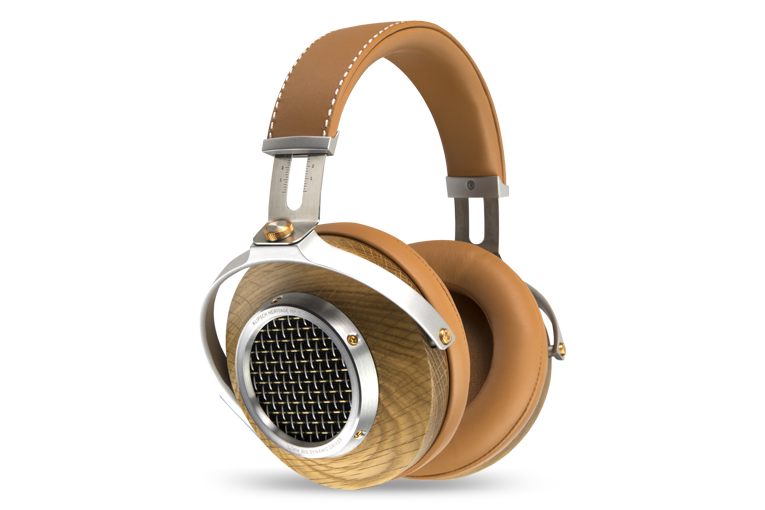
Like most classic headphones of decades past, the HP-3s have dynamic drivers -- voice-coil-driven diaphragms that work just like speaker drivers. But these aren’t just any old dynamic drivers. The 52mm units are made of a mix of biocellulose and inorganic fibers, a combination that should do a much better job of damping high-frequency resonances than the Mylar diaphragms of most dynamic headphone drivers. Instead of attaching the diaphragm directly to the basket, as in most headphones with Mylar diaphragms, Klipsch attaches it just they would in a typical speaker driver: with a urethane surround. This design should provide better damping of unwanted resonances, and give the driver greater excursion for better bass reproduction.
Unlike almost all other large, audiophile-oriented headphones, the HP-3s are designed so that portable use is -- well, not exactly convenient, but not crazy, either. The specified sensitivity is a high 98dB/mW, which should be enough to let them play reasonably loud with almost any source device. “There’s no reason in this day and age why any set of headphones shouldn’t work with a smartphone,” Klipsch’s senior manager of product development for headphones, Vlad Grodzinskiy, told me when I saw the first HP-3 prototype at the 2016 Consumer Electronics Show. (I’m confident that Paul Klipsch, for whom high efficiency in loudspeakers was always a high priority, would agree.) The HP-3s fold flat enough to fit into a standard laptop bag with plenty of room left for the laptop, and their semi-open design provides more isolation from outside sounds than open-back headphones can.

The HP-3s are available in finishes of walnut, ebony, or oak, with the cowhide-covered headband color-coordinated with the choice of wood. But whichever color you choose, the look says “refined,” not “dorky.”
In the box
The Klipsch Heritage HP-3s present perhaps the most gratifying unboxing experience in the headphone business. They come in a wooden display box with an acrylic top. Sliding out one of the box’s wooden sides grants access to two drawers: one holds the headphones, the other the accessories. Those accessories include two cables: one 53” (1.37m) long and tipped with a 1/8” (3.5mm) plug; and one 78” (2m) long and tipped with what appears to be a 1/4” plug, but is actually another 3.5mm plug with a beautifully integrated 3.5mm-to-1/4” adapter. The cables connect to the headphones with standard 3.5mm mono plugs, so many aftermarket cables will probably work with them.
The other accessory is a desktop stand that holds the headphones: a nice touch for such an elegant product. Nor is the stand a cheap afterthought -- it appears to have been designed specifically for the HP-3s, and it’s sturdy and stable enough to support these large headphones with ease.
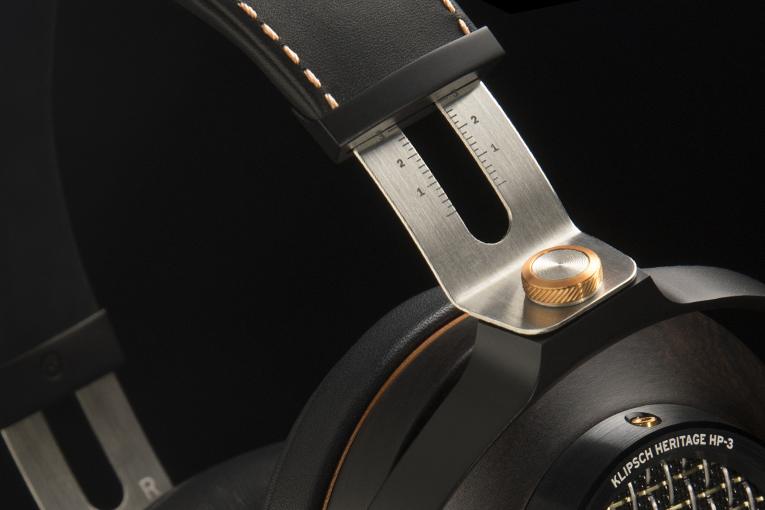
Two things you might miss having: a carrying sack to keep the HP-3s from getting scratched as they ride in your laptop bag or suitcase, and a cable that facilitates a balanced connection to a high-end headphone amp. However, Klipsch’s Heritage headphone amplifier ($499), offered as a partner to the HP-3s, does have a four-pin balanced XLR connector; I have to imagine that Klipsch or a third party will soon offer a balanced cable for these headphones.
Use
I’ve already touched on the HP-3s’ relative portability and practicality. The only remaining ergonomic issue is comfort, and that wasn’t a problem at all. I wore them for extended listening sessions at home and in various coffeehouses, and while I found their earpads somewhat firm -- and they’re not what I’d call lightweight -- I never found them uncomfortable. The big earpads easily fit over my ears without mashing them, and the nice, even clamping force exerted over the full surfaces of the earpads and headband kept the HP-3s in place without putting excessive pressure on any part of my head.
Sound
I think “Jumpin’ In,” from Milcho Leviev and Dave Holland’s Up & Down (256kbps MP3, M•A Recordings), a recording of a 1988 concert by this piano-bass duo, contains the best-recorded, most enjoyable jazz double-bass solo I’ve ever heard. A plucked double bass can easily sound muddy and murky -- even the greatest bassists and the best audio systems sometimes struggle to make notes sound distinct from one another. In “Jumpin’ In,” Holland simply wails, dancing through quick runs with a perfect balance of precision and seemingly reckless enthusiasm. Through the Heritage HP-3s, every note was easy to pick out. The second octave of bass (40-80Hz, corresponding to the lowest 12 notes on a standard double bass) sounded a little on the full side, but rather than muddying the sound, this just gave it a little extra oomph. Leviev’s piano had a huge yet natural presence on the soundstage, and I got a great sense of the size and spaciousness of Tokyo’s Suntory Hall. As often happens when I hear great audio gear, I was once again thrilled that human beings had been able to deliver to my ears such a realistic simulacrum of live music, three decades after and 9000 miles away from the original performance.
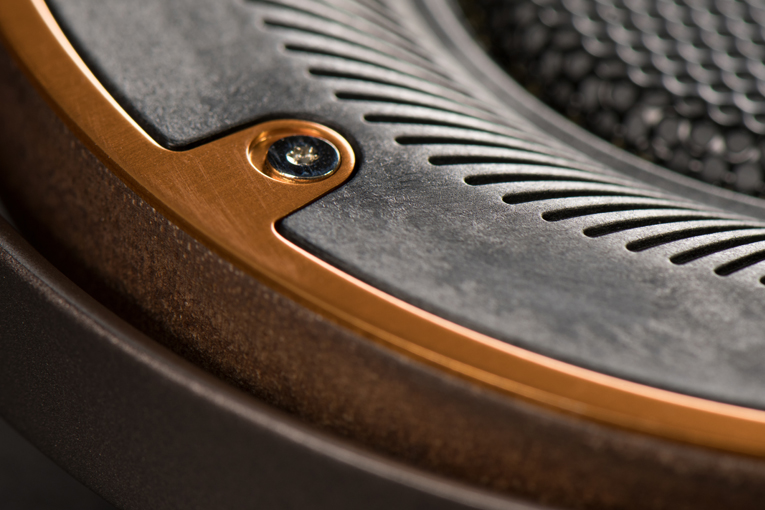
OK, the fact that headphones costing more than $1000 got all this right shouldn’t be all that remarkable. What is remarkable is that I’m describing the sound I heard with the HP-3s driven by my Samsung Galaxy S8 smartphone in a crowded Starbucks, against a background of Rolling Stones tunes and the chatter of 30 other patrons. Most large audiophile headphones wouldn’t sound particularly great connected to an S8, which has a maximum output about 4dB lower than my iPod Touch (or an iPhone 8 with Apple’s Lightning headphone dongle), and lacks muscle and control in the bass when connected to demanding headphones. And most similar headphones have an open-back design that would have let in almost all of the surrounding Starbucks ambiance, to obscure Holland’s bass solo.
Still, the HP-3s being what they are, I did most of my listening with my usual test rig: a Musical Fidelity V90-DAC digital-to-analog converter connected to an Audio-gd NFB1-AMP headphone amp. And I ran the HP-3s with music at a fairly high volume for about 40 hours before I listened, just to make sure they were broken in.
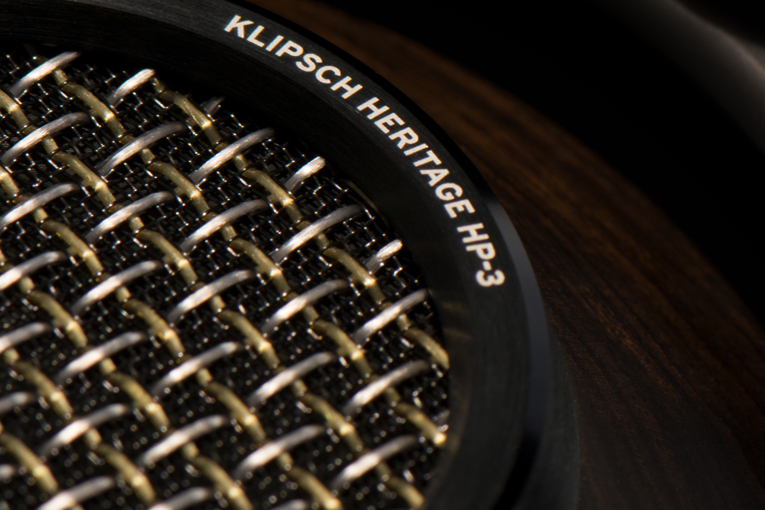
“This Here,” the sort-of title track of pianist Bobby Timmons’s 1960 classic This Here Is Bobby Timmons (16-bit/44.1kHz WAV, Riverside), presents a less dramatic, less lifelike sound than Up & Down. Sam Jones’s double bass is recorded almost hard right on the stereo soundstage; still, it’s far more like the kind of sound that most jazz fans most often find themselves listening to. The HP-3s extracted the best stuff from “This Here” -- Timmons’s soulful piano stylings, Jones’s robust bass sound, and Jimmy Cobb’s insistent yet smoothly swinging ride cymbal -- and presented it without comment or coloration. Outside of that little extra push in the bass I mentioned above -- which, again, just gave the sound a bit more groove -- I couldn’t find a thing amiss in the HP-3s’ performance.
Cueing up “This Here” repeatedly, I compared the HP-3s with several other large audiophile headphones: the AR AR-H1 ($599) and Audeze LCD-X ($1699) planar-magnetic models, and the Beyerdynamic Amiron Homes ($599), which, like the HP-3s, use dynamic drivers. All of these headphones sound good -- I gave them all good reviews -- but each also sounds different from the others. The AR-H1s, to my surprise, sounded much like the HP-3s, even though they use different driver technologies; the tonal balance was almost the same, the HP-3s simply presenting more detail in the mids and treble, as you should expect for twice the price. The Amiron Homes also sounded similar, with about the same level of detail as the AR-H1s but a little more treble.
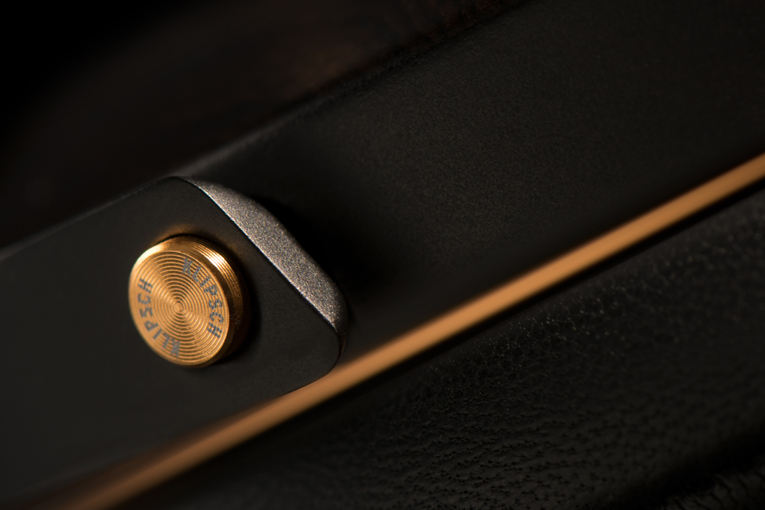
The Audeze LCD-Xes presented the HP-3s with much more of a challenge -- not surprising, considering they cost $500 more. I thought the HP-3s sounded flatter and more neutral, but while the LCD-Xes gave Timmons’s tunes a subtle midrange boost, they also made the music more vivid and exciting, with better dynamics and a bit more sense of space.
I got a similar sense of the HP-3s simply presenting the music as it is when I played the fourth movement, Allegro ma non troppo, of Dvořák’s Symphony No.8, with Rafael Kubelik conducting the Bavarian Radio Symphony Orchestra (320kbps Ogg Vorbis, BR Klassik/Spotify). The trumpets kick off the movement with a loud fanfare, and I easily got a sense of the dimensions of the hall. I loved the way the headphones centered the trumpets firmly at the center of the orchestra’s width, despite all the reverberance -- just as real trumpets sound in a good concert hall. As the strings kicked in, the reverberance of the hall (or perhaps just my awareness of the reverberance) jumped up another notch while keeping the instruments’ sounds focused. And, as in the Dave Holland solo, the HP-3s lent a lovely, subtle bloom to this movement’s plucked double-bass lines.
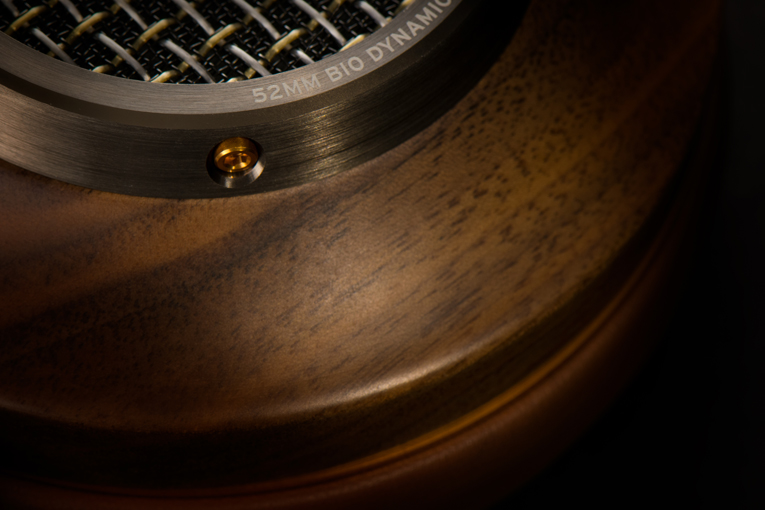
The HP-3s treated with equal respect some radically different recordings, such as “Grinding All My Life,” from Nipsey Hussle’s Victory Lap (320kbps Ogg Vorbis, Atlantic). This track is a straightforward, classic-sounding hip-hop recording, with spacious electronic effects; an insistent kick drum, steady claps, and hi-hat keeping the time; and Hussle’s rap dead center. Just for kicks, I played the same recording through my Revel Performa3 F206 tower speakers -- which I now use as recording monitors because they’re the most neutral-sounding speakers I’ve owned -- and the tonal balance of every instrument and voice was just about the same. The biggest difference was that the HP-3s gave me fuller and, I think, more suitable bass; the F206es tend to sound a little light in the low notes.
With only one recording did the HP-3s’ bass seem a bit more full than I wanted: Gregory Porter’s wonderful Nat “King” Cole & Me (16/44.1 WAV, Blue Note). In “Pick Yourself Up,” Porter’s voice sounded slightly too full, and the deep bass bloomed a bit more than I wanted. Still, with this recording I liked the HP-3s’ sound better than that of the Audeze LCD-Xes, because the Audezes’ slight midrange emphasis made Porter’s voice sound a little too thin for my taste. Which headphones would you prefer in this case? I don’t know, but I couldn’t fault your taste either way.
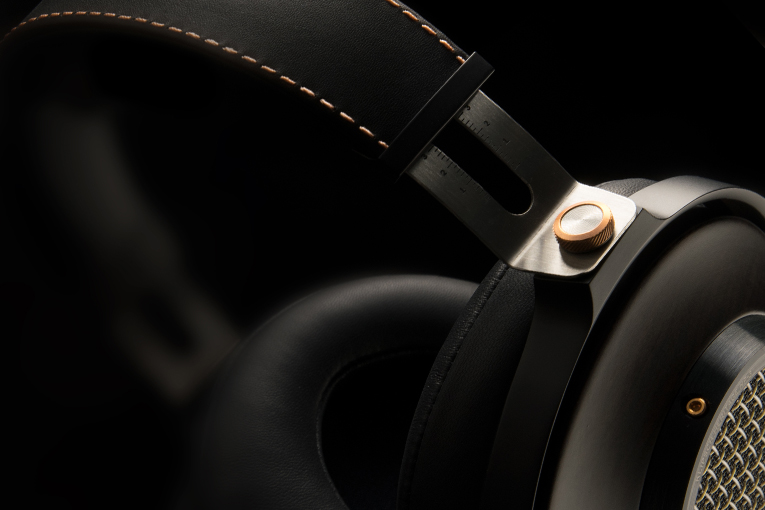
Unfortunately, I didn’t have the Focal Clears ($1500) on hand to compare with the HP-3s. From my notes, I think I’d have trouble choosing between the two. Both excel at midrange and treble detail. The HP-3s have a little more bass; whether that’s a pro or a con is up to you. The HP-3s are definitely the much more practical choice for use on business trips or at Starbucks, for their fold-flat design and superior isolation, and because they sound great even with a smartphone.
Conclusion
The Heritage HP-3s are Klipsch’s best headphones ever, and serious competitors for any headphones in the $1000-$1600 range. It’s hard for me to predict whether you’d like the HP-3s more or less than competing headphones, but I’m pretty confident that you’ll like them. Unlike with so many headphones, there’s simply no reason not to like the HP-3s -- no troublesome sonic colorations, no discomfort, and nothing to worry about in choosing partnering gear. So for home use, the HP-3s are very competitive. But if you want a great set of audiophile headphones you can easily carry with you and use with any source device you happen to have in your bag, the HP-3s, in my opinion, have no serious competition.
. . . Brent Butterworth
Associated Equipment
- Sources -- Samsung Galaxy S8 smartphone, Musical Fidelity V90-DAC digital-to-analog converter
- Headphone amp -- Audio-gd NFB1-AMP
Klipsch Heritage HP-3 Headphones
Price: $1199 USD.
Warranty: Two years repair or replacement.
Klipsch
3502 Woodview Trace, Suite 200
Indianapolis, IN 46268
Phone: (800) 544-1482
Website: www.klipsch.com







